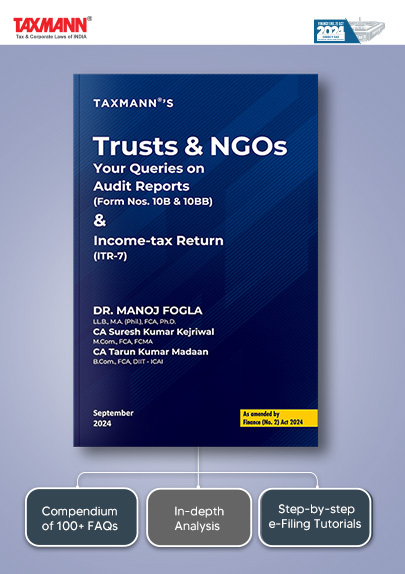Taxation of Cooperatives in India – Key Provisions | Deductions | Concessional Tax Rates
- Blog|Income Tax|
- 5 Min Read
- By Taxmann
- |
- Last Updated on 28 August, 2024
The taxation framework for cooperatives in India, governed by the Income-tax Act, 1961, recognizes their unique role in sectors like agriculture, finance, and housing. Key provisions include Section 80P, which provides deductions on income from activities such as banking, marketing, and supplying goods to members, fostering the cooperative movement. Additionally, cooperatives can opt for the simplified tax regime under Section 115BAD, which provides a reduced tax rate of 22% with certain deductions forfeited. For newly established manufacturing cooperatives, Section 115BAE introduces a concessional tax rate of 15%, aimed at encouraging industrial growth. These provisions enable cooperatives to optimize tax liabilities while supporting community development and economic sustainability.
Table of Contents
1. Introduction
In the dynamic economic landscape of India, cooperatives and newly established manufacturing entities play crucial roles across various sectors like agriculture, finance, and housing. These entities, grounded in the principles of mutual assistance, collective benefit, and industrial growth, significantly contribute to community development and the national economy.
The taxation framework for cooperatives under the Income-tax Act, of 1961, acknowledges their unique operational nature and purpose. This guide delves into the essential aspects of cooperative taxation, particularly focusing on Section 80P, tax rates, and the optional regime under Section 115BAD. It also explores the newly introduced Section 115BAE, providing a comprehensive understanding of these vital economic actors.
2. Taxation Framework for Cooperatives
2.1 What is a Cooperative Society?
Cooperative societies focus on achieving collective economic objectives while ensuring equitable profit distribution. The Act provides a distinctive framework for their taxation, recognizing their contribution to community welfare and economic development. The basic tax rates for cooperatives are:-
| Total Income | Tax Rate |
| Up to Rs. 10,000 | 10% |
| From Rs. 10,001 to Rs. 20,000 | 20% |
| Above Rs. 20,000 | 30% |
| Surcharge where total income | |
| Exceeds Rs. 1 Crore but does not exceed Rs. 10 Crore | 7% |
| Exceeds Rs. 10 Crore | 12% |
2.2 Section 80P: Deductions for Cooperatives
One of the pivotal provisions for cooperatives under the Act is Section 80P, which provides significant deductions on income. This section is designed to encourage the cooperative movement by offering tax relief on specific types of income.
100% of deductions is provided on income from the following activities of any society:
- Carrying on a business of banking and providing credit facilities to its members
- Collective disposal of labor to its members
- Purchase of agricultural implements, seeds, livestock, etc for supplying them to members
- Marketing and processing (without aid of power) of agricultural produce of members
- Supply of milk, oilseeds, fruits, or vegetables grown/raised by members
- Cottage Industry
- Fishing and allied activities
- Letting out of godowns or warehouses for storage, processing, or facilitating the marketing of commodities
In respect of income from other activities, following deduction is allowed:
| Rs. 1,00,000 | Consumer Cooperative Society |
| Rs. 50,000 | Others |
Also, cooperatives can claim deductions on income from interest or dividends received from investments in other cooperative societies. This framework ensures that cooperatives remain focused on their core mission of serving members and fostering community development.
2.3 Section 115BAD: Optional Tax Regime for Cooperatives
To further simplify the tax landscape for cooperatives, Section 115BAD was introduced, offering an optional tax regime. This provision allows resident cooperative societies to opt for a reduced tax rate @ 22% plus surcharge @ 10% and cess @ 4%, effectively making 25.168% (22+10+4) of their total income.
However, to avail this reduced rate, cooperatives must forgo certain deductions as follows:
| Section | Deduction Disallowed |
| 10AA | Deduction of SEZ |
| 32(1)(iia) | Additional Depreciation |
| 33AB | Deposit in Tea/Coffee/Rubber Development A/c |
| 33ABA | Deposit for Site Restoration Fund |
| 35(1)(ii), (iia), (iii) or 35(2AA) | Deduction for Contribution to:
|
| 35AD | Capital expenditure for specified business |
| 35CCC | Expenditure on Agricultural Extension Project |
| 80C to 80U | Deductions under Chapter VI-A However, Section 80JJAA and Section 80LA are allowed |
Also, set off of any loss carry forward or unabsorbed depreciation attributable to any of the above deductions will not be allowed. Moreover, once a cooperative opts for this regime, it is irrevocable for the same or any subsequent year, necessitating careful consideration before making this choice.
2.4 Section 115BAE: Concessional Tax Rate for New Manufacturing Cooperatives
The Finance Act 2023 introduced a new tax scheme under section 115BAE for the resident cooperative societies engaged in manufacturing or producing an article or thing. The eligible cooperative societies are the ones that have been set up and registered on or after the 1st of April 2023, and have commenced manufacturing or production of an article or thing on or before the 31st of March 2024. If a cooperative society opts for this scheme, then income will be taxable at a concessional rate if certain conditions are fulfilled. The tax rate is 15% plus 10% Surcharge and 4% cess, effectively making 17.16%.
The conditions for section 115BAE shall be similar to the conditions applicable to the New Manufacturing Companies, which are as follows: –
- The co-operative society has been set up and registered on or after 1-10-2019 and has commenced manufacturing or production of an article or thing on or before 31-03-2024.
- The business is not formed by splitting up or reconstructing a business already in existence.
- Does not use any machinery or plant previously used for any purpose, except machinery imported from outside India. (However, 20% of the total value of machines can be previously used machines)
Note: For the removal of doubts, it is clarified that the business of manufacture or production of any article or thing shall not include a business of, —
| Development of computer software in any form or in any media |
| Mining |
| Conversion of marble blocks or similar items into slabs |
| Bottling of gas into a cylinder |
| Printing of books or production of cinematograph film |
Note:
Tax @ 22% on other income which is not incidental to manufacturing or production of an article or thing and in respect of which no specific rate of tax has been provided. STCG derived from the transfer of capital assets on which no depreciation is allowable is also taxable at 22%.
Moreover, once a cooperative opts for this regime, it is irrevocable for the same or any subsequent year, necessitating careful consideration before making this choice. Also, deductions and set off of losses carried forward prescribed in Section 115BAB are not allowed.
2.5 Practical Implications and Strategic Tax Planning
For cooperatives, navigating the tax landscape effectively involves understanding and leveraging available tax provisions to optimize financial outcomes. Strategic planning, including evaluating the benefits of Section 80P deductions versus the simplified regime under Section 115BAD for cooperatives or opting for the 15% tax rate under Section 115BAE for new manufacturing cooperatives, is crucial.
3. Conclusion
The taxation framework under the Income-tax Act, 1961 recognizes the unique contributions of cooperatives and new manufacturing companies to India’s economy. Section 80P offers substantial deductions to cooperatives, while Section 115BAD provides a simplified tax regime. The introduction of Section 115BAE reflects the government’s commitment to fostering industrial growth by offering a concessional tax rate to new manufacturing ventures. By understanding and utilizing these provisions, cooperatives can effectively navigate the tax landscape, ensuring compliance, promoting financial sustainability, and contributing to India’s dynamic economic growth.
Disclaimer: The content/information published on the website is only for general information of the user and shall not be construed as legal advice. While the Taxmann has exercised reasonable efforts to ensure the veracity of information/content published, Taxmann shall be under no liability in any manner whatsoever for incorrect information, if any.

Taxmann Publications has a dedicated in-house Research & Editorial Team. This team consists of a team of Chartered Accountants, Company Secretaries, and Lawyers. This team works under the guidance and supervision of editor-in-chief Mr Rakesh Bhargava.
The Research and Editorial Team is responsible for developing reliable and accurate content for the readers. The team follows the six-sigma approach to achieve the benchmark of zero error in its publications and research platforms. The team ensures that the following publication guidelines are thoroughly followed while developing the content:
- The statutory material is obtained only from the authorized and reliable sources
- All the latest developments in the judicial and legislative fields are covered
- Prepare the analytical write-ups on current, controversial, and important issues to help the readers to understand the concept and its implications
- Every content published by Taxmann is complete, accurate and lucid
- All evidence-based statements are supported with proper reference to Section, Circular No., Notification No. or citations
- The golden rules of grammar, style and consistency are thoroughly followed
- Font and size that’s easy to read and remain consistent across all imprint and digital publications are applied








 CA | CS | CMA
CA | CS | CMA


